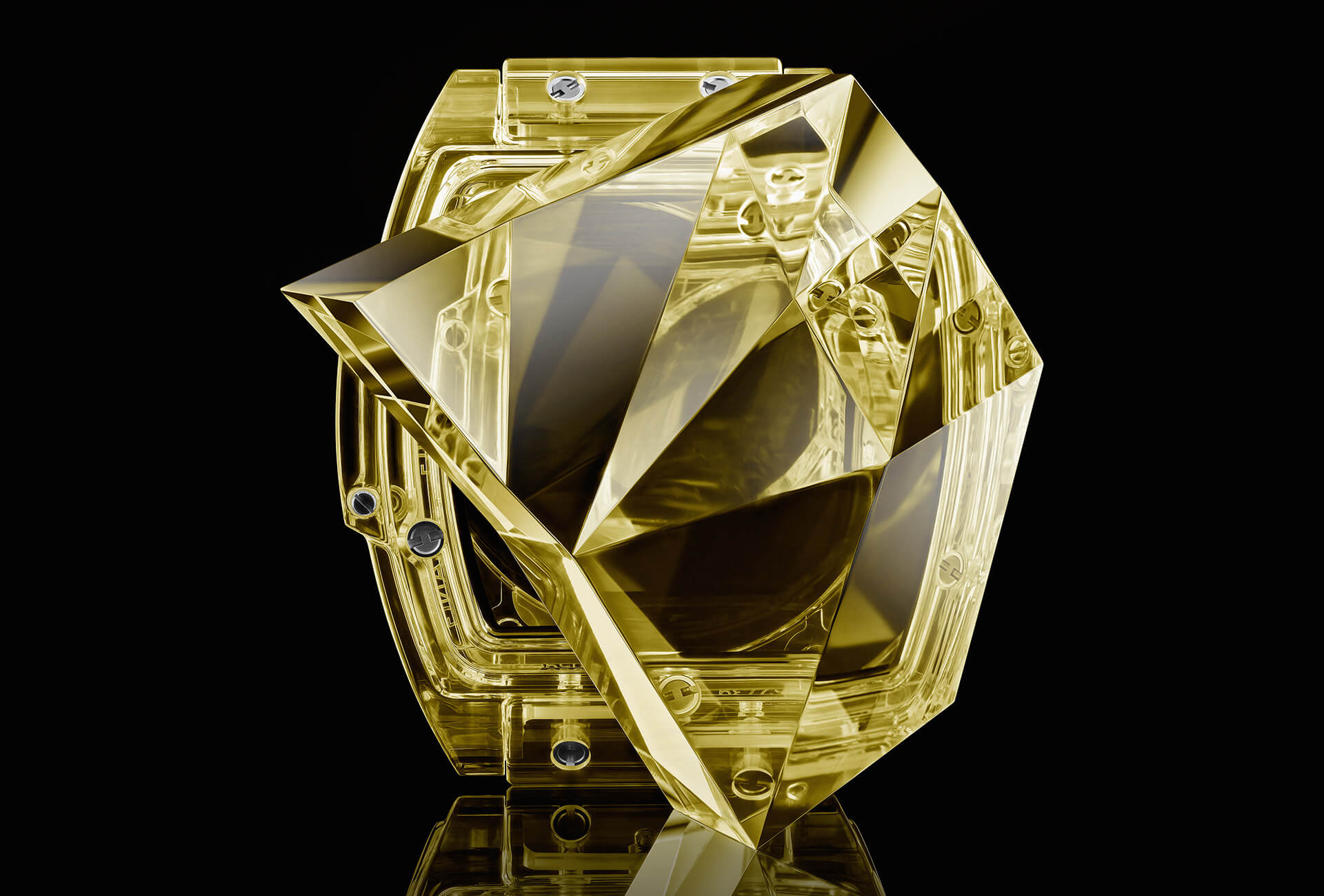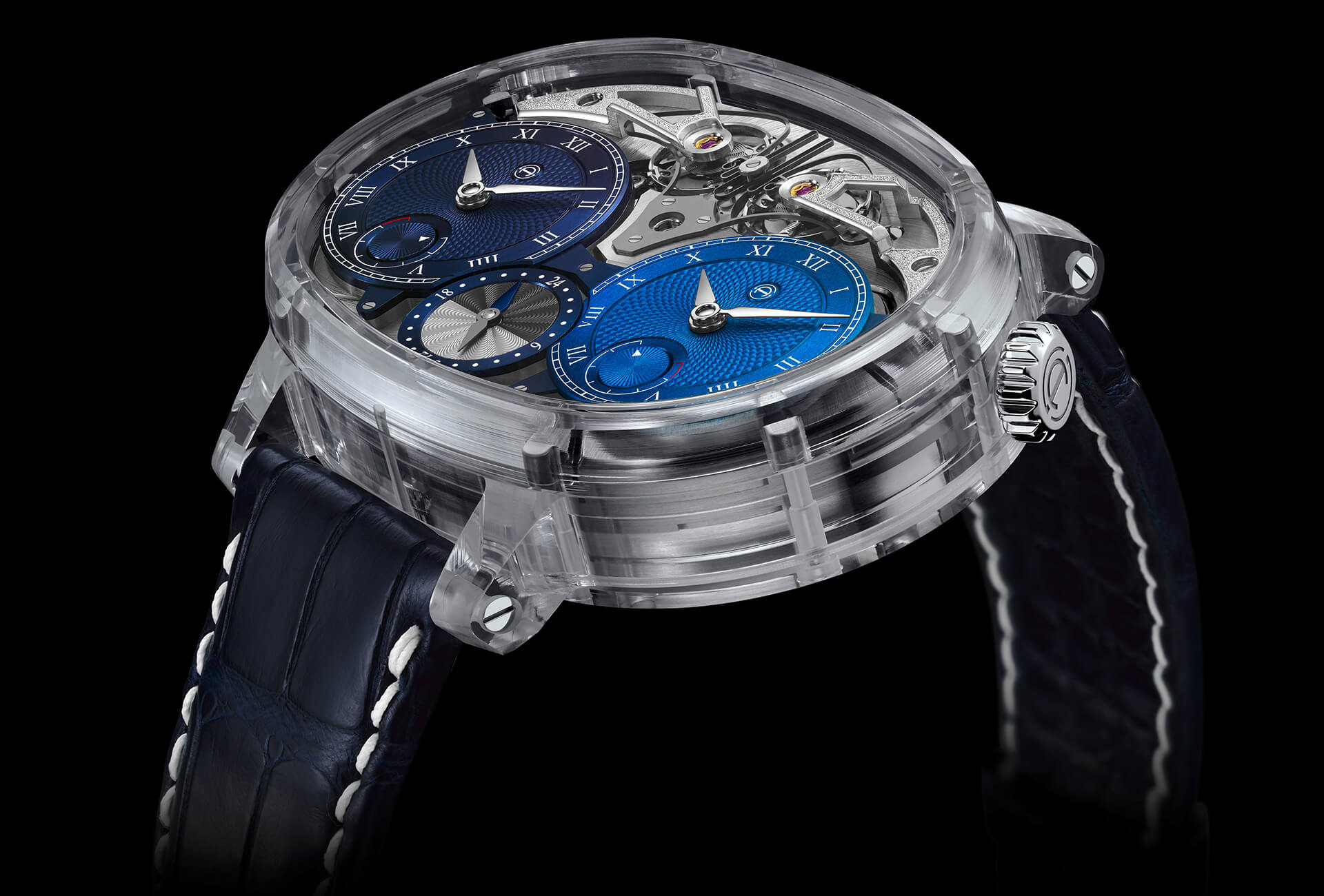Auguste Verneuil was no watchmaker and his name is rarely, if ever, mentioned in discussions of the great innovations in the history of the profession, and yet his method of synthesizing ruby and sapphire, published in 1902, changed watchmaking profoundly.
It used to be that only the most valuable portable watches were equipped with jewels, i.e. the ruby bearings that reduce wear in the mainplate and the bridges. Ruby, like sapphire, is a variety of corundum. Both share the same atomic structure and the same physical properties. Only their colours differ, the result of the oxides within their structure. They are the second-hardest mineral, after diamond. Natural rubies, once sought-after not only by watchmakers but also by goldsmiths for mounting in jewellery, are extremely rare and this is reflected in their price. Because of their irregular size, inclusions and possibly fissures (cracks), rubies are notoriously difficult to cut or pierce. A ruby with fissures is at risk of breaking at any point in the cutting process, reducing all previous work to nothing.
The Kyropoulos method
When synthetic rubies became available, the situation changed completely. Natural rubies were destined for use as gemstones while the watch industry was able to acquire perfectly regular rubies at a much lower cost. This meant that jewels (bearings and pallet stones) were no longer reserved for the most expensive watches.
Verneuil, the son of a watchmaker, was himself a chemist. The method he used to synthesise corundum is known as flame fusion: aluminium oxide powder is trickled through a flame with a core temperature of around 2,100° Celsius. The molten powder falls onto a “starter” piece of corundum called a boule. The boule serves as a model for the atomic structure of the crystal that will start growing, like a stalagmite, on top of it as the powder continues to fall through the flame. As the seed is slowly rotated, the solidifying monocrystal grows into the shape of a candle or a bullet.
Early experiments produced only small corundums, particularly in diameter. These were ideal for the production of bearings and pallet stones. It wasn’t until the 1970s that larger sizes were obtained – sufficient to make highly scratch-resistant sapphire crystals as a replacement for the watch glass – using a perfected version of a method developed in 1936 by Spyro Kyropoulos, a Greek physicist who had emigrated to Germany. The Kyropoulos method consists in melting the same aluminium oxide powder inside a vacuum at 2,100° Celsius. In this case, the boule must be lowered into the centre of the hot liquid. For the liquid to solidify and keep a regular atomic structure, it has to be cooled very slowly from the centre outwards. This can take several days, depending on the size of the crucible. All synthetically produced corundums must be heat-treated after solidifying; otherwise they are so brittle they break with the slightest shock. The largest monocrystal produced with the Kyropoulos method has a diameter of 30 cm and weighs 350 kg.
A watchmaker’s dream come true
The ability to grow larger monocrystals opened up many more options for industries interested in the qualities of these super-hard materials, such as optics, precision instruments and, of course, the watch industry. Rado and Century were among the first to use synthetic jewels, in the 1970s. Both even ventured into faceting them, like oversized gemstones.
Despite the fact it can be molten, there is no way of casting synthetic corundum into specific shapes. It can only be worked on in its solid state and, because of its hardness, can only be cut by a high-energy laser or machined using diamond tools. The so-called box glasses made from synthetic sapphire that are currently popular, a result of the vintage trend in watches, almost perfectly imitate the shape of Perspex glasses from the 1950s and 1960s, with the added advantage of being highly scratch-resistant.
Furthermore, CNC machines equipped with diamond tools that can handle sapphire blocks have made a watchmaker’s dream come true: an entire watch case made of transparent sapphire. Cutting a complex case out of such a hard material can take up to an entire day, not counting the work that goes into polishing the surfaces. The high cost of one of these cases is therefore due not only to the value of the sapphire itself, but also the amount of time and additional work that goes into it.


















